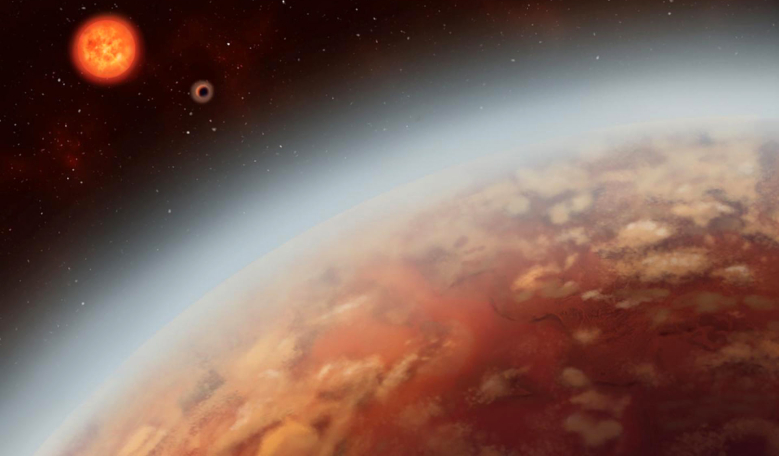For nearly 30 years now, the Hubble Space Telescope has revolutionised humanity’s understanding of the cosmos, from helping to confirm the existence of supermassive black holes to determining the age of the Universe and now it has had a hand in helping astronomers with the first detection of water vapour in an exoplanet lying within the habitable zone of its star.
The planet is known as K2-18 b, a rocky world eight-times as massive as our own planet and twice as large. It whips round its host star, a red dwarf 110 light years from Earth, in 33 days and sits in a comfortable orbit 0.1429 AU away in the star's habitable zone. Initial studies of K2-18 b, which was first discovered in 2015, placed it in the ‘super-Earth’ category of exoplanets.
At the same time, K2-18 b was also discovered to have a sibling – K2-18 c. Like its bigger neighbour, K2-18 c is also a super-Earth, with a mass about 7.5 times that of Earth, but the planet is closer to its star than K2-18 b, and probably too hot to be in the habitable zone.
Super-Earths are described as extrasolar planets with a mass higher than Earth's, but substantially below those of the Solar System's ice giants, Uranus and Neptune (which are 14.5 and 17 times Earth's, respectively). The term is something of a misnomer though as it refers only to the mass of the planet, and does not imply anything about the surface conditions, it’s habitability or indeed if the world is a gas giant or more of a rocky body.
This sizeable world is more of the latter – a rocky world. Density calculations of 3.7g/cm3 confirmed that K2-18 b is not a gas giant like those we are familiar with in our Solar System. But neither could it be called Earth-like. Its size and mass rule out any such similarities with our planet, and its host star is equally dissimilar to our Sun.
The M2.5 Dwarf star that K2-18 b orbits (K2-18) is less than half the size of our Sun and at 3500 Kelvin, it has a much lower temperature. It bathes K2-18 b in a glow of ultraviolet light making the planet’s surface not wholly conducive to human occupation.
While this planet is not a second Earth, said one of the researchers of this latest study, Angelos Tsiaras, as he spoke to journalists at a Nature press briefing yesterday, it is the only planet known right now outside of our Solar System that has an atmosphere and the correct temperature to support water, he said.
Tsiaras, and colleagues, who are all based at the University College London, London, UK, used the transit spectroscopy technique to determine that while K2-18 b is not Earth-like, it is wet, to some degree. This technique measures the difference in stellar light filtered through the atmosphere of the planet with that of the ‘normal’ star light to ascertain any differences.
Although the precise composition of the atmosphere cannot be extracted – Hubble is brilliant, but its not technically capable of determining chemical signatures like other dedicated telescopes – the authors modelled different scenarios to find the best fit possible with their data.
Those models led the team to conclude that K2-18 b’s atmosphere is likely packed with water vapour, as much as 50 percent full and that its gaseous envelope might also contain a significant amount of hydrogen.
“With the current data we can only detect the existence of an atmosphere and the existence of water,” Tsiaras says. But combined with the rest of the measurements, it is enough to infer the planet's habitability status. And its pretty good; K2-18 b is the best candidate for habitability other than Earth that we know right now, Tsiaras explained.
For a more detailed chemical analysis of K2-18 b and other planets like it, scientists will have to wait a few more years when the likes of the James Webb Space Telescope (JWST) and the ARIEL telescope are launched, so that other molecular species can be detected.
ARIEL, the Atmospheric Remote-sensing Infrared Exoplanet Large-survey, set for orbit in mid-2028, will be the first mission dedicated to measuring the chemical composition and thermal structures of hundreds of transiting exoplanets. JWST meanwhile has had its launch date pushed back to March 2021 at the earliest.
An Earth mark II K2-18 b may not be, but the exoplanet does make an excellent target for follow-up observations, which in turn will provide further insights into the composition and climate of habitable-zone planets.
Details of this atmospheric research, which have just been published in Nature Astronomy, can be found on-line at https://www.nature.com/articles/s41550-019-0878-9











